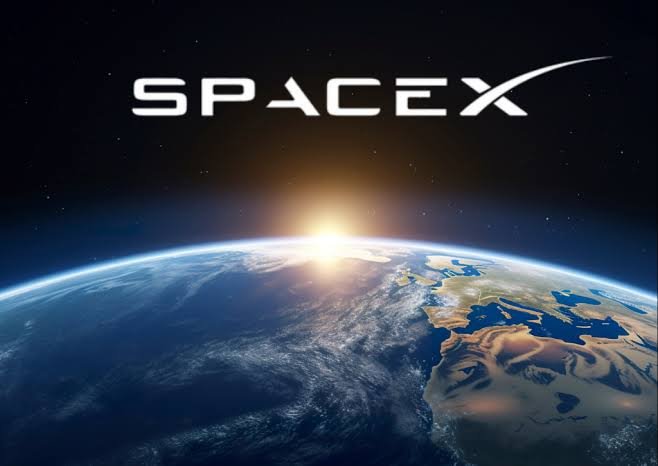Discover the ways in which the Indian Space Research Organization’s CE-20 cryogenic engine is comparable to the SpaceX Raptor in terms of engineering ingenuity, operational efficiency, and versatility for sea-level and space ignition below.
The field of space exploration is characterized by a formidable level of competition and the introduction of ground-breaking innovations. The groundbreaking Raptor engine that SpaceX has developed has established a new standard for rocket propulsion systems. On the other hand, the Indian Space Research body (ISRO), which is India’s most prominent space research body, is making progress toward matching this capability.

In order to demonstrate a substantial advancement in cryogenic technology, the Indian Space Research Organization (ISRO) successfully hot-tested its CE-20 cryogenic engine for sea-level ignition on November 29. The test was conducted at the Propulsion Complex in Mahendragiri, Tamil Nadu. The Indian Space Research Organization (ISRO) is now a powerful competitor in the rocket propulsion industry, with capabilities that are comparable to those of SpaceX.
Cryogenic engines are described as revolutionary for what reasons?
The cryogenic engines that are used in modern rocket science are crucial to the field. Cryogenic fuels, which include liquid hydrogen and liquid oxygen, are kept at extremely low temperatures since they are used in these engines. When it comes to launching huge payloads into orbit or beyond, their great efficiency and thrust capabilities make them a crucial tool.
Recent developments made by the Indian Space Research Organization (ISRO) with the CE-20 cryogenic engine put it closer to the engineering marvel that is SpaceX’s Raptor engine. The Raptor engine is a full-flow staged combustion engine that is recognized for its ability to function without any interruptions at sea level as well as in space.
Innovations Made by ISRO Regarding Cryogenic Engines
A total of two significant cryogenic engines have been developed by ISRO to this day:
- The CE-7.5 is utilized in the Cryogenic Upper Stage (CUS) of the GSLV Mk-II.
- The CE-20 was developed specifically for the CUS of the GSLV Mk-III (LVM3).
Recently, the CE-20 has undergone an update that has resulted in a thrust level of 22 tonnes. This modification has resulted in an increase in the payload capacity of the LVM3 launch vehicle. Nevertheless, the capability to function effectively at sea level, which was proved in the most recent hot test, is an important milestone that takes it closer to the capabilities of SpaceX’s Raptor engine.
Sea-Level Ignition: Why It Is Important to Consider
In the past, the Indian Space Research Organization (ISRO) has consistently refined its cryogenic engines for high-altitude or space operations. This is because the absence of atmospheric pressure simplifies the dynamics of ignition and exhaust. To achieve ignition at sea level, however, presents a distinct set of obstacles due to the high atmospheric pressure and flow instabilities inherent in the process.

The Difficulties Involved in Ignition at Sea Level
Combustion Instabilities: When the atmospheric pressure is high, it might cause oscillations during the ignition process, which can put the structure at risk of being damaged.
- Flow Separation: High-area-ratio nozzles have difficulty fully expanding exhaust gases at sea level, which results in turbulence.
- Thermal Gradients: At sea level, it is more difficult to manage the huge temperature gradients that exist between cryogenic fuel and hot combustion gasses.
ISRO has proved its engineering prowess by conquering these hurdles, which had been presented to it. Significant progress has been made as a result of the successful testing of the CE-20 engine at sea level, which had a nozzle area ratio of 100 percentage points.
The Raptor Engine, Developed by SpaceX, Serves as a Model for Cryogenic Technology
The Raptor engine, which is manufactured by SpaceX, is lauded for its adaptability and effectiveness. Its full-flow staged combustion cycle, which provides higher chamber pressures and complete propellant combustion, is the source of its capacity to function both at sea level and in space. This ability allows it to operate in both environments.
The Raptor Engine’s Most Important Characteristics
- “Full-Flow Staged Combustion” has the ability to maximize efficiency by making use of all of the fuel and oxidizer that is available.
- “Multi-Environment Operation”: Capable of delivering dependable performance in both the atmosphere and at sea level during space travel.
- The capability to restart is essential for missions that include many orbital movements.
The CE-20 engine developed by ISRO is currently on the route to obtaining capabilities comparable to those of other engines, notably with its shown ability to ignite and restart at sea level.
Making Cryogenic Engine Testing More Straightforward
Historically, acceptance testing of cryogenic engines has been carried out at High-Altitude Test (HAT) facilities, which has resulted in an increase in both difficult and expensive procedures. By utilizing a Nozzle Protection System, the Indian Space Research Organization (ISRO) has introduced a sea-level testing process that is both more cost-effective and less complicated.
The Advantages of Conducting Sea-Level Tests
There is no longer a requirement for high-altitude facilities for the initial testing, which results in a reduction in complexity.
“Cost Efficiency”: This feature streamlines the testing process, which in turn reduces the costs associated with it.
The engine’s performance is validated across a wide range of situations, which contributes to enhanced reliability.

Not only does this strategy make testing easier, but it also gets the Indian Space Research Organization (ISRO) one step closer to achieving a multi-environment operational engine similar to the Raptor.
The capability to restart has become the next frontier.
It is one of the most notable characteristics of the SpaceX Raptor that it is able to restart in the middle of a flight, which enables it to do intricate orbital maneuvers. The most recent tests conducted by ISRO have demonstrated that a multi-element igniter, which is an essential component for restart capability, performs as expected.
The Obstacles Faced When Restarting the Engine
- In the absence of air pressure, ensuring a reliable ignition condition is referred to as “vacuum conditions.”
Controlled combustion refers to the process of managing the rapid expansion of gases in order to achieve efficient burning. - The design of igniters that are capable of withstanding repeated ignition cycles is referred to as “igniter durability.”
It is a crucial step toward the fielding of a restartable engine that the Indian Space Research Organization (ISRO) has successfully demonstrated vacuum ignition and multi-element igniters.
Analyzing the Differences Between the CE-20 and the Raptor
| Feature | SpaceX Raptor | ISRO CE-20 |
|---|---|---|
| Cycle | Full-Flow Staged Combustion | Gas Generator |
| Thrust Level | ~200 tonnes | 22 tonnes (upgraded) |
| Sea-Level Operation | Yes | Tested Successfully |
| Restart Capability | Yes | Demonstrated |
| Applications | Starship, Heavy Payloads | LVM3, Gaganyaan |
Despite the fact that the Raptor continues to be superior in terms of thrust and combustion cycle sophistication, the latest developments made by the CE-20 demonstrate ISRO’s commitment to close the gap at some point.
Implications for the Exploration of Space Resources

The advancements in engineering that have been made by ISRO have far-reaching implications:
- Increased Payload Capacity: Higher thrust levels allow for bigger payloads, which helps to support ambitious missions such as Gaganyaan.
- Cost-Effective Missions: The overall mission costs are reduced thanks to tests that are simplified and engines that are adaptable.
- Positions the Indian Space Research Organization (ISRO) as a competitive force in the international space industry at the global level.
The reduction of dependency on international cooperation for the development of sophisticated propulsion systems is the fourth benefit of technological independence.
The Path That Lies Ahead
Because to ISRO’s dedication to innovation, the organization has made significant strides in the field of cryogenic engine technology. Not only is the organization’s goal of obtaining capabilities equivalent to those of the SpaceX Raptor motivated by competition, but it is also motivated by the desire to push the limits of what is possible in the field of space exploration through its efforts.
The ISRO’s Long-Term Objectives
- The Full-Flow Combustion Cycle: The process of shifting away from gas generator cycles and toward combustion processes that are more efficient.
The development of engines with thrust levels that are greater than fifty tons is the second objective. - “Reusable Engines”: Giving priority to reusability in order to cut down on mission expenses?
Utilizing cutting-edge engines for the purpose of deep space exploration is the fourth objective of interplanetary missions.
Concluding remarks
A tremendous step forward in rocket propulsion technology is represented by the cryogenic engine CE-20 that is being developed by ISRO. Due to the recent developments that have been made, the engine is now in a position to compete with SpaceX’s Raptor, which is considered to be one of the most advanced rocket engines.

The Indian Space Research Organization (ISRO) has demonstrated its leadership in the international space arena with this accomplishment, which prepares the door for more ambitious missions in the years to come. The Indian Space Research Organization (ISRO) is constantly striving to achieve excellence in space technology, and the entire world is watching with eager anticipation as it continues to innovate.







